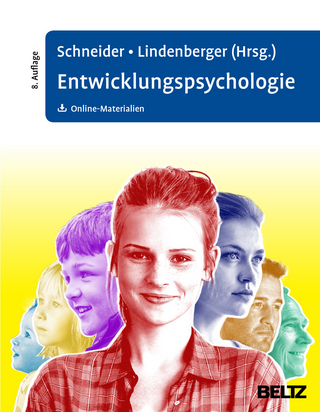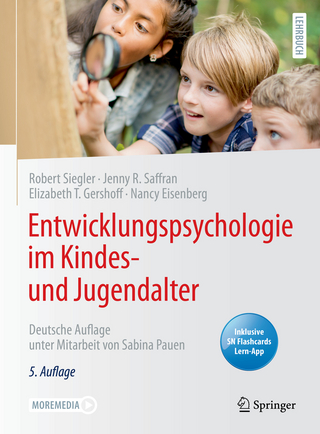
Concise Guide to Child and Adolescent Psychiatry
American Psychiatric Press Inc. (Verlag)
978-0-88048-332-2 (ISBN)
- Titel erscheint in neuer Auflage
- Artikel merken
This brief update on current thinking in child and adolescent psychiatry describes both general and specific approaches to the psychiatric evaluation of children. The authors discuss the importance of using multiple informants to gain a full description of children seen in psychiatric settings and emphasize how information from parents is especially critical to understanding a child's emotional problems. In this chapter, the authors review how to conduct a child interview. In Chapter 3, the authors look at the major Axis 1 disorders that are usually first evident in infancy, childhood and adolescence. They focus on disruptive behaviour disorders that are often brought to the attention of the family or psychiatrist by school officials: attention-deficit hyperactivity disorder, conduct disorder and oppositional defiant disorder. In Chapter 4, Drs Dulcan and Popper address other Axis 1 disorders that are frequently seen in children and adolescents, including anxiety disorders, eating disorders, gender disorders, Tourette's disorder and other tic disorders, elimination disorders, stuttering, elective mutism, identity disorder and reactive attachment disorder.
Chapter 5 focuses on selected adult disorders that may begin in childhood or adolescence. Chapter 6 covers developmental disorders; mental retardation, pervasive developmental disorders and specific developmental disorders. Chapter 7 addresses real-life issues that frequently confront pediatricians and psychiatrists. Drs Dulcan and Popper discuss common child psychiatric emergencies and the psychiatrist's role in treating children or families who experience stressors. Discussed here are suicide, child maltreatment and out-of-control behaviour. This chapter also addresses family transitions (divorce, death of a family member, adoption), adolescent pregnancy, obesity, physically ill children and children of physically or psychiatrically ill parents. Chapters 8 and 9 suggest practical and clinically relevant psychopharmacologic and psychosocial treatments. The authors discuss the major psychotropic medications routinely prescribed for children and emphasize special considerations to follow in using these agents in young persons.
The book concludes with a discussion about the psychosocial treatments that are of benefit to children and their families: individual psychotherapy, parents counselling, behaviour therapy, problem-solving therapy, family therapy, group therapy, hospital and residential treatment, day treatment and adjunctive treatments. Appendixes suggest additional reading for professionals and books that may be helpful for parents.
Part 1 Introduction: change in childhood and adolescents; comorbidity; diagnosis - an overview of the use of DSM-111-R for children and adolescents; treatment - an overview. Part 2 Evaluation and treatment planning: evaluation - use of multiple informants; history from parents; patient interview; family evaluation; standardized diagnostic instruments; medical evaluation; school assessment; psychological testing; treatment planning - feedback. Part 3 Axis 1 disorders usually first evident in infancy, childhood, or adolescence - disruptive behaviour disorders: attention-deficit; hyperactivity disorder; conduct disorder; oppositional defiant disorder. Part 4 Other Axis 1 disorders usually first evident in infancy, childhood, or adolescence: anxiety disorders of childhood or adolescence - separation anxiety disorder, over-anxious disorder; eating disorder - anorexia nervosa, bulimia nervosa, pica, rumination disorder of infancy; gender identity disorder of childhood; Tourette's disorder and other tic disorders; elimination disorders - functional encopresis. functional enuresis; stuttering; elective mutism; identity disorder; reactive attchment disorder of infancy or early childhood. Part 5 "Adult" disorders that may begin in childhood or adolescence: psychoactive substance use disorders; schizophrenia; mood disorders; anxiety disorders - phobias, positraumatic stress disorder, obsessive-compulsive disorder, panic disorder; sleep disorders - evaluation of sleep-related complaints, dyssomnias, parasomnias; adjustment disorders. Part 6 Developmental disorders: mental retardation; pervasive developmental disorders - autistic disorder; specific developmental disorders - academic skills disorder, language and speech disorders, motor skills disorder. Part 7 Speical clinical circumstances: emergencies - assessment and triage, suicide, child maltreatment, out-of-control behaviour, family transitions - divorce and re-marriage, physical illness in parents or siblings, death of a family member, adoption, working parents; adolescent pregnancy; obesity; physically ill children or adolescents, children of psychiatrically ill parents. Part 8 Psychopharmacology: special issues for children and adolescents stimulants, antodepressants, lithium carbonate, neuroleptics, minor tranquilizers, sedatives and hypnotics, anticonvulsants, antiparkinson agents, clonidine, propranolol. Part 9 Psychosocial treatments: individual psychotherapy; parent counselling; behaviour therapy; cognitive-behaviour, problem-solving therapy; family treatment; group therapy; hospital and residential treatment; day treatment; adjunctive treatments - special education placements, recreation, foster care, parent support groups.
| Erscheint lt. Verlag | 1.1.1991 |
|---|---|
| Zusatzinfo | index |
| Verlagsort | VA |
| Sprache | englisch |
| Gewicht | 227 g |
| Themenwelt | Geisteswissenschaften ► Psychologie ► Entwicklungspsychologie |
| Medizin / Pharmazie ► Medizinische Fachgebiete ► Psychiatrie / Psychotherapie | |
| ISBN-10 | 0-88048-332-6 / 0880483326 |
| ISBN-13 | 978-0-88048-332-2 / 9780880483322 |
| Zustand | Neuware |
| Haben Sie eine Frage zum Produkt? |
aus dem Bereich



